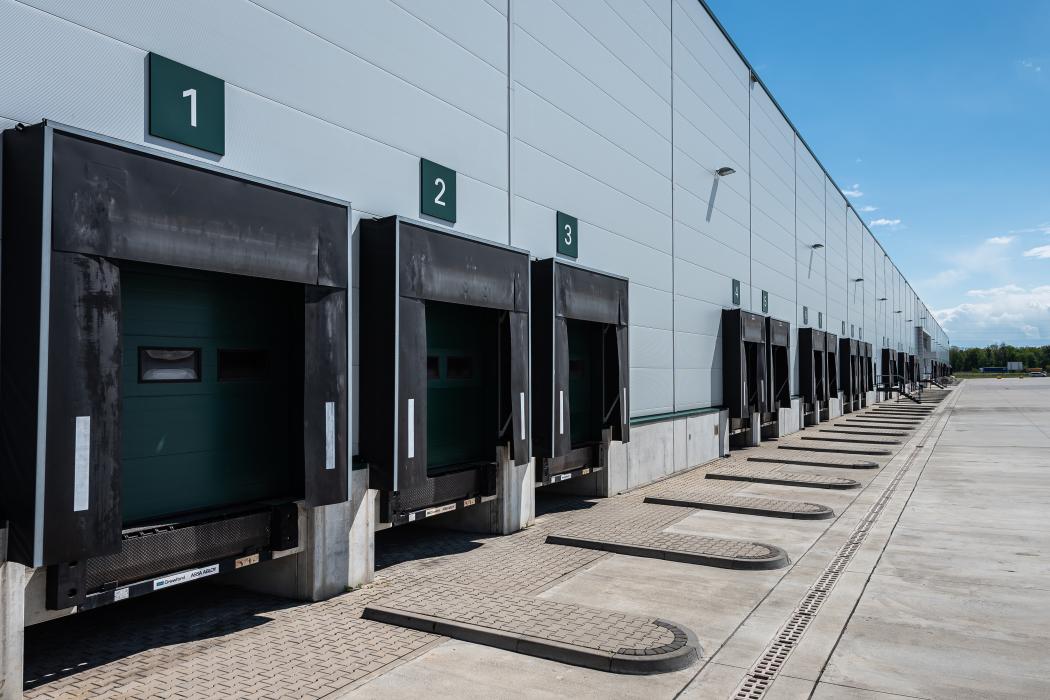The transaction volume in the German industrial and logistics real estate investment market decreased by twelve percent to 2.63 billion euros in the first half of 2025 compared to the same period last year. However, a slight revival was recently recorded, according to an analysis by the real estate service provider CBRE on July 7. Thus, 1.44 billion euros were attributed to the second quarter of 2025 – after 1.19 billion euros in the first quarter. The prime yield for logistics properties remained stable at 4.4 percent.
“We have observed a renewed increase in momentum in the German industrial and logistics real estate investment market in the second quarter,” said Kai Oulds, Head of Logistics Investment at CBRE in Germany. “There were larger transactions of single properties in the range of 50 to 100 million euros. This opens a market segment that was recently very inactive,” Oulds continued.
In general, this size class accounted for a share of 35 percent (plus 17 percentage points). The segment from 20 to 50 million euros also rose significantly by
22 percentage points to 34 percent. However, the size class of more than 100 million euros declined – its share decreased by 49 percentage points to just four percent. The reason for this was the noticeable decline in portfolio transactions by 31 percentage points to 14 percent.
According to CBRE, there were significant declines in the shares of core-plus (minus eight percentage points to 21 percent) and value-add properties (minus seven percentage points to 29 percent) in the risk classes. In contrast, investments in properties from the core segment increased (plus five percentage points to 33 percent) as did opportunistic products (plus four percentage points to nine percent). These two risk classes and owner-occupiers (plus five percentage points to eight percent) were even able to record absolute increases in investment volumes compared to the previous year.
“We expect core investments to gain further importance,” explained Kristine Kühn, Director Valuation Advisory Services. “Because with value-add products, we see regional restraint in some cases due to the recently somewhat weaker demand from users and elsewhere due to a
lack of product supply.”
While domestic investors were able to slightly increase their share of the transaction volume to 780 million euros, international investors still showed by far the greater interest in German logistics properties (minus four percentage points to a share of 70 percent). The most active international investors came from the USA – they invested 365 million euros. On the seller side, however, German players had a clear overweight with a share of 66 percent (plus 21 percentage points).
The most active buyers were asset/fund managers with investments of 733 million euros. They were followed by open-end real estate and special funds as well as corporates, each with around 464 million euros. On the seller side, corporates were particularly active with 820 million euros – even ahead of project developers/builders with 641 million euros.
“Given the transactions currently in preparation, a noticeable market revival is indicated for the second half of the year. Portfolio deals alone are likely to involve between one and 1.5 billion euros, which are currently on the market. Accordingly, an
annual transaction volume roughly at the level of 2024 is to be expected – at that time, 7.7 billion euros were invested,” said Oulds.
“The positive outlook for the end of the recession this year and growth in the following years provides a good foundation for the prospects in the German real estate investment market, which is one of the most important and largest in Europe,” said Dr. Jan Linsin, Head of Research at CBRE. “Especially the great interest from international investors shows, in light of the current geopolitically induced reconfiguration of global supply chains, that much can be expected from the German market.”
Together with the fiscal package launched by the German government, medium-term opportunities would arise that should be boldly seized at the beginning of the current real estate investment cycle. “The latest sentiment indicators suggest that Europe’s largest economy will leave its phase of weakness behind,” said Linsin. “The logistics sector in particular will benefit from the additional investments in the local infrastructure.” Now setting the course for the future will pay off.






